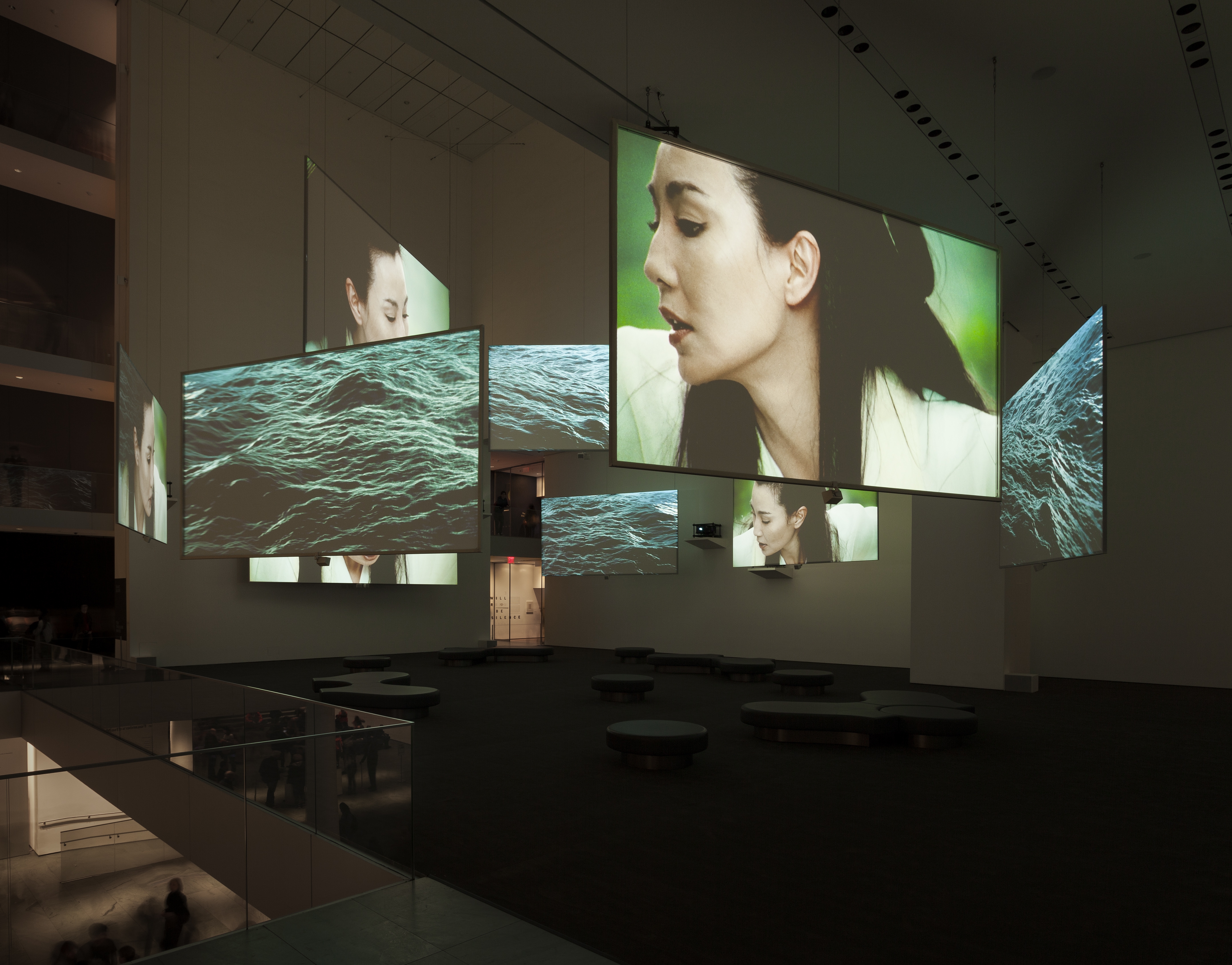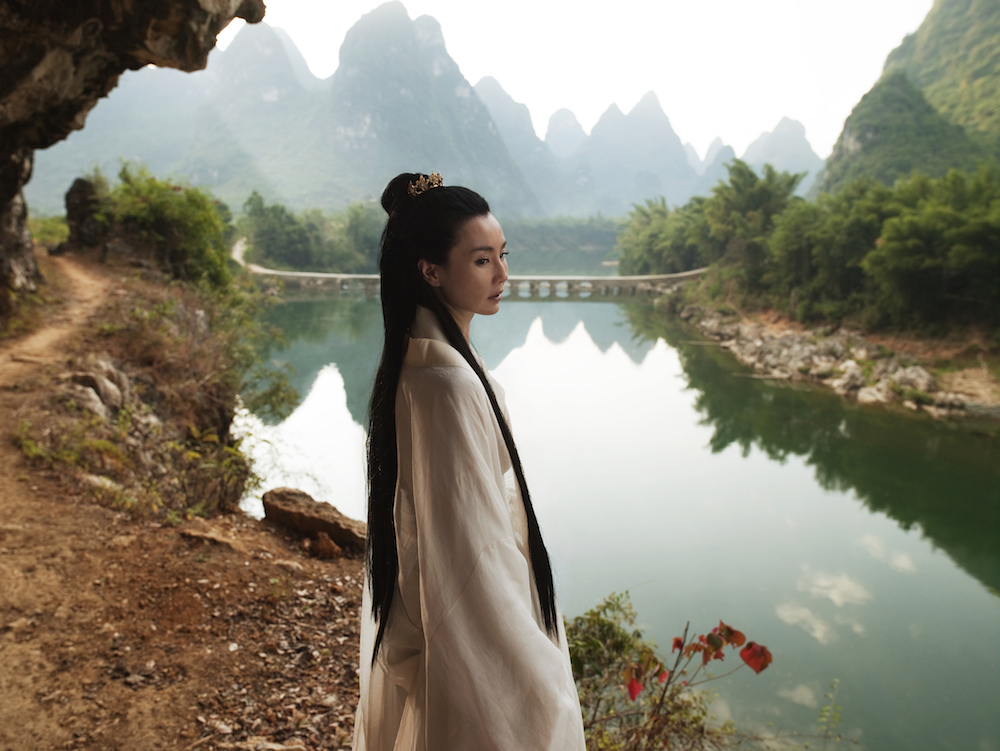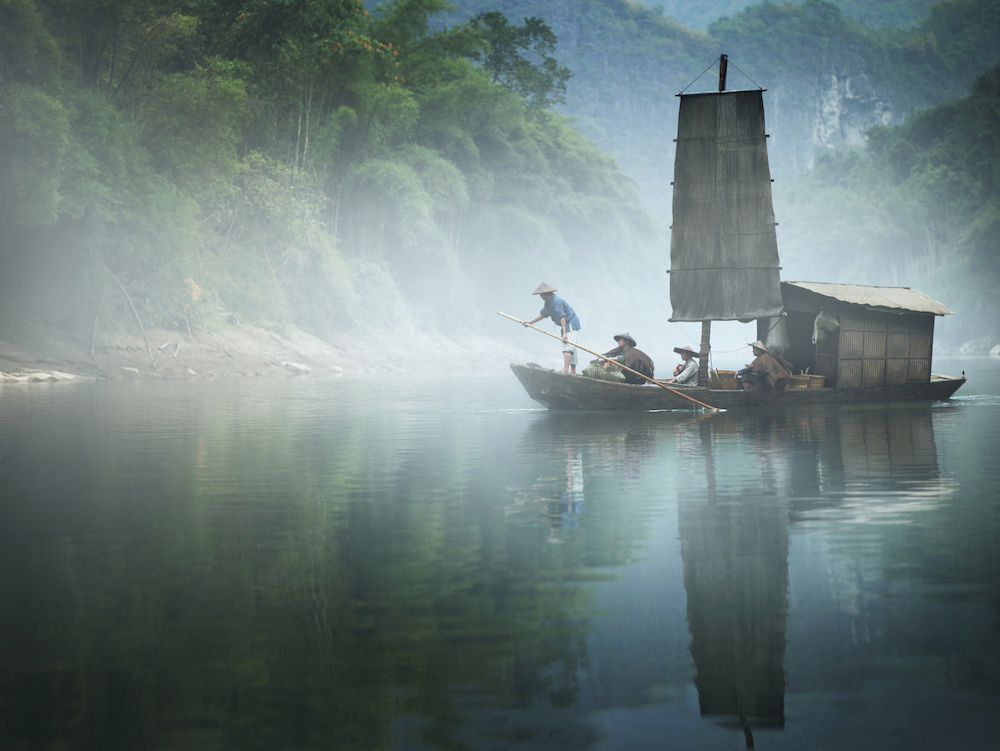
I first saw Isaac Julien’s mesmerizing and tragic Ten Thousand Waves at Hayward Gallery in 2011, when the nine-screen film installation had its London preview (opening in late 2010) as part of the gallery’s Move: Choreographing You. Within this sprawling exhibition, viewers were invited to walk through the space to see the double-sided screens from all angles, though many sat on the floor in the darkened space for extended periods, while waves crashed and goddesses soared overhead.
“This engulfing work brings together the most compelling aspects of cinema, documentary and art”
The film work includes a characteristic coming together of real-life footage and original scenes shot by Julien. The trigger for this work was the Morecambe Bay tragedy, which happened in 2004, when twenty-three Chinese immigrants, who has been smuggled to England to work as cockle pickers, died on UK shores. Following the incident, Julien invited Wang Ping to England, and commissioned him to write a poetic response—Small Boats—which is read out during the work. A similar cultural exchange happened when Julien travelled to both Shanghai and the remote Guangxi province in China, and following conversations with academics, artists and curators in both countries, decided to shoot a fictionalized journey of the goddess Mazu, who is fabled to have led fisherman to safety, and who originates from the same place as the cockle pickers, the Fujian Province. Mazu is played by Maggie Cheung in the work, and is shown flying overhead, intercut with footage of the storm that ravaged Morecambe Bay and recordings of the emergency services’ response, and with further original scenes created by Julien—a reshooting of the classic Chinese film The Goddess (1934). In the scenes created by Julien, the filmmaking techniques are exposed again and again, as green screens appear in place of landscape, and camera crew are seen in shot.

Within the work, many ideas of old and new China come together, and the culture of migration is explored throughout. Julien called on the artistic talent within the country to really bring the work to life. As well as Wang Ping and Maggie Chueng, Julien also worked with legendary Chinese artist and filmmaker Yang Fudong and cinematographer Zhao Xiaoshi, among others.
“There’s a moment where, if you’re not really from a culture, you have to let things play out in a way that the people that you’re making the film with and about… they have their own synergy and energy,” he says of his working style, in the current issue of Elephant magazine. “I didn’t really want [Ten Thousand Waves] to have a position on something. I think my perspective was very much about trying to make a work where you’re looking at the question of people moving or migrating from such long distances, and what happens to them. They are drowned in the sea. That signifies in black culture. Also, thinking about the fact that in Chinese culture, especially in the Fujian province, people have been travelling for thousands of years. The European anxiety on migration is kind of a blip. If you take the long view, it’s one little part of the globe which currently has an anxiety about itself, which leads to obviously stupid things, like Brexit.”
“Ten Thousand Waves is certainly dynamic, leading the way for numerous other works by Julien which treat film as, in his own words, ‘the sum of all art'”
Seeing this work was my first experience of the emotional pull of film within the gallery space—film and video is often used in an art context in a more cynical manner. The epic, sublime and gut-wrenching nature of this work was something I’d only really experienced in the cinema before, and then it was less of an all-encompassing experience—single screen, with the audience sat traditionally in rows in front. This engulfing work brings together the most compelling aspects of cinema, documentary and art, pulling the mind between harsh realities and heightened drama.

“Cinema as a technique, I like. However, I think that cinema which we see in the movie houses is not incredibly interesting these days,” says Julien. “There are a few films that are inspiring, but I think cinema culture is pretty dead in the water these days. It’s just boring you know, and the art world has proven itself to be a much more dynamic space (until the grip of the art fairs).”
Ten Thousand Waves is certainly dynamic, leading the way for numerous other works by Julien which treat film as, in his own words, “the sum of all art”, where dance, writing, music, performance and more can come together in one space. The artist has most recently created a film installation around the life and work of the Italian-born, Brazilian-based late architect Lina Bo Bardi, which can be viewed at Victoria Miro Gallery on London’s Wharf Road until 27 July.
All images courtesy the artist, Metro Pictures Gallery, New York and Victoria Miro, London/Venice. Photographer: Jonathan Muzikar
You can read more about Isaac Julien in the current issue of Elephant magazine
BUY ISSUE 39





